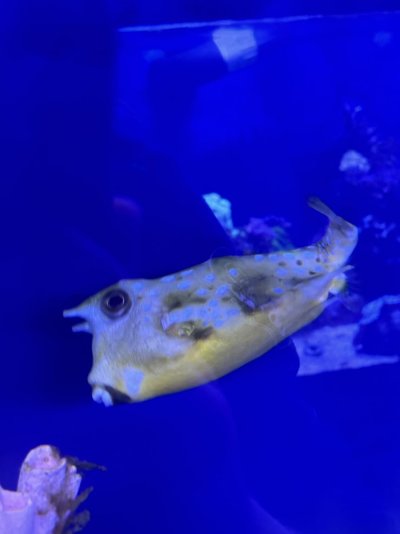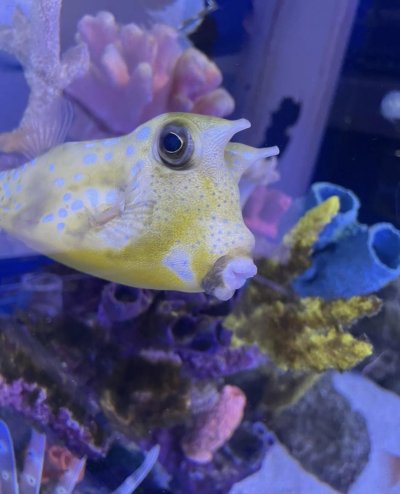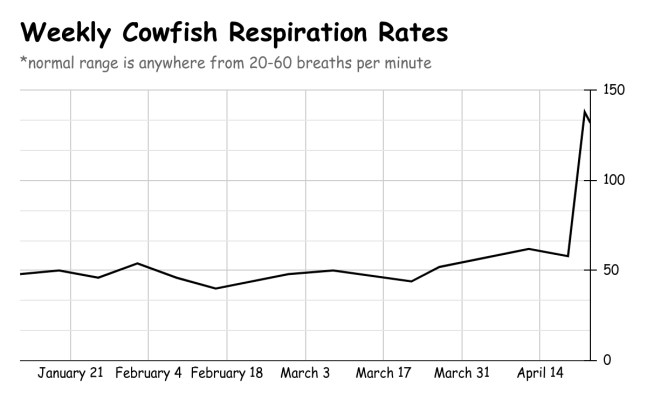Hey! I am a student in the Marine Biology program at Central Campus, in Des Moines, IA. Over the past few days, a classmate and I have observed a white, fuzzy growth just beneath the mouth of our Longhorn Cowfish. It looks to be either a fungal or bacterial infection, but we are unsure. (images below of before and after) We have also noticed color/pattern changes that started back in October 2023. The respiration rates of the cowfish have also been quite high since we observed the growth (chart attached). Any ideas on what this could be, or possible treatments? Thanks!



















